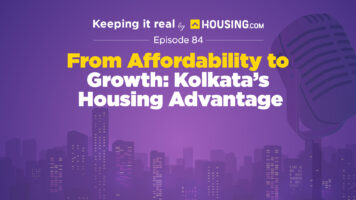July 16, 2024: The real estate sector is the second largest employer in India, accounting for 39% of carbon emissions. The government’s constant push to achieve net zero emissions by 2070 is likely to play a pivotal role in shaping the real estate market in India. As per Vestian Research, over 65% of Grade A office space across India’s top seven cities is green-certified. Moreover, among 1,362 Grade A buildings, 805 (or 59%) boast of green certifications, highlighting India’s growing commitment to sustainable construction.
As India’s office market attracts global occupiers, developers are increasingly prioritising international certifications. This trend is reflected in the dominance of LEED certification, which accounts for a remarkable 74% share as of Q2 2024. Moreover, Gold is the most prominent certification in the Indian office market as 49% of buildings are certified gold under LEED and 51% are accredited gold under IGBC.
| City | Total Stock (in million square foot) | Green Stock (in million square foot) | % Share |
| Bangalore | 270.2 | 172.1 | 64% |
| Chennai | 82.6 | 68.3 | 83% |
| Hyderabad | 152.9 | 95.9 | 63% |
| Kolkata | 27.4 | 16.9 | 62% |
| Mumbai | 147.9 | 90.4 | 61% |
| NCR | 129.7 | 90.2 | 70% |
| Pune | 77.8 | 43.8 | 56% |
| Total | 888.5 | 577.7 | 65% |
Southern cities (Bangalore, Chennai and Hyderabad) account for 58% of the total green stock across pan-India. Bangalore accounts for the highest, 172 million square foot (msf), green stock amongst the top seven cities of India. Chennai accounts for the highest percentage share, 83%, of green stock out of the city’s total Grade A stock. Despite having the lowest stock for Grade A office buildings in pan-India, 62% of the area is green-certified in Kolkata. On the other hand, Pune has the lowest percentage, 56%, of green-certified office buildings despite the prominence of MNCs in city leasing.
Grade A office buildings with a built-up area of less than 5 lakh sqft account for 47% of the total number of green-certified buildings. On the other hand, office buildings with a built-up area of more than 10 lakh sqft account for only 19% of the total number of green-certified buildings. Despite this, 90% of the total projects within this category still qualify as green buildings, showcasing a strong focus on sustainability. Notably, green certification is rare in office buildings with a built-up area of less than 1 lakh sqft. This signifies lower preference for sustainability practices amongst small and medium-scale developers and occupiers.
Green-certified buildings command a 12% to 14% premium on average over non-green buildings. This demonstrates that developers are rewarded for initial investment in costly sustainable development, as they can charge a premium from occupiers. Bangalore leads the pack with a premium of 23-25% with Chennai and Hyderabad following behind at 12-14% and 13-15%, respectively. This suggests a strong focus on sustainability in these tech hubs, where companies are willing to pay a premium to promote environmental responsibility and enhance employee well-being. Developers in Mumbai and Pune charge 8-12% premium in rentals for green-certified buildings compared to non-certified areas.
| Got any questions or point of view on our article? We would love to hear from you. Write to our Editor-in-Chief Jhumur Ghosh at jhumur.ghosh1@housing.com |







